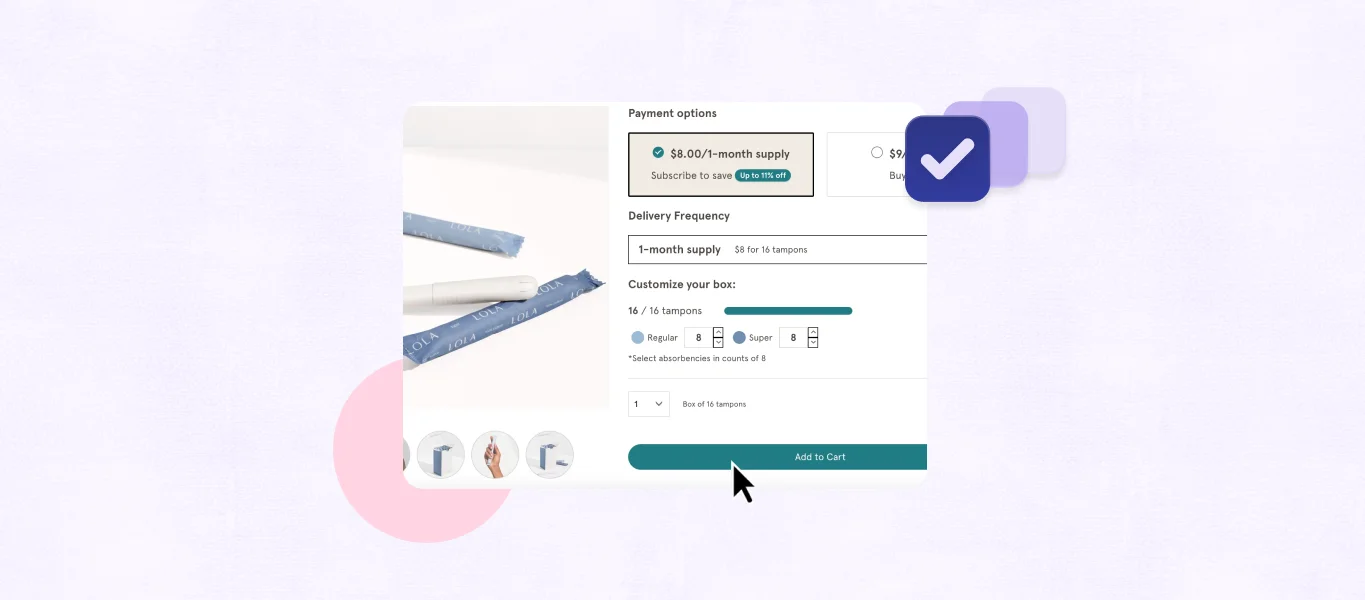Ecommerce workflows give merchants the opportunity to greatly enhance their customer experience, by automating specific workflows to surprise and delight customers and help mitigate churn.
Automation tools—such as Recharge Flows—allow merchants to create an ecommerce workflow automation that targets a specific process or path within the customer journey. Thanks to these targeted enhancements and A/B testing to further optimize offerings, merchants can increase customer lifetime value (LTV) and satisfaction.
This powerful tool is reshaping the landscape of online businesses, enabling them to operate more efficiently and focus on what really matters—delivering exceptional products and a seamless experience to their customers.
In this post, we’ll explore why workflows are so useful for DTC brands, dive into some workflow automation ideas, and guide you on how to build an ecommerce workflow with Flows.
Key takeaways
- Workflow automation can help your online business increase customer lifetime value and decrease churn.
- Stores that automate workflows are more efficient and have a better chance of streamlining time-consuming processes.
- With Recharge Flows, merchants can create a variety of workflows without any coding.
Why should ecommerce stores use workflow automations?
There’s a reason why automation tools are so popular—they allow online retailers to do their job smarter and faster. Below we’ll dive into some of the other benefits of using workflows.
Increase LTV & tackle churn
By optimizing specific moments in the shopper journey—and injecting moments of surprise and delight for customers—ecommerce stores can increase their LTV thanks to a smoother customer experience. Shoppers will want to stick around longer when they know they can shop your brand’s offerings with ease. Plus, anti-churn measures introduced thanks to workflows can help increase retention and cut churn issues off at their source.
Boost efficiency & productivity
Ecommerce businesses often grapple with an array of repetitive tasks that can be time consuming and prone to errors. Manual data entry, management of your inventory, and order processing are just a few examples. Workflow automation decreases the margin for error by streamlining these processes and freeing up valuable time for merchants.
Enhance the customer journey
The shopping journey is a critical aspect for every ecommerce store to consider. By automating various stages of their journey, from order confirmation to shipping notifications, brands can ensure a seamless and consistent experience for their customers. Automation tools can also address customer complaints promptly, demonstrating your commitment to great customer service.
Optimize inventory management
Effective inventory management is a cornerstone of successful ecommerce operations. Ecommerce workflow automation can be used as inventory automation tools to facilitate real-time updates, automatic restocking, and seamless coordination between suppliers and retailers. This also minimizes excess inventory, leading to cost savings and improved cash flow.
Streamline business processes
Business processes can become complex as your online store grows. Workflow automation simplifies these processes by creating a systematic and standardized approach to tasks. This not only reduces the likelihood of errors but also ensures that every aspect of your business is running smoothly.
3 workflow automation ideas for ecommerce merchants
Now that we’ve covered why ecommerce stores should utilize automated workflows, let’s dive into a few tangible ways your ecommerce business can go about using Flows. Listed below are three ideas to kickstart your use of this powerful automation tool.
1. Surprise & delight customers
Surprise and delight refers to a tactic that ecommerce stores use to plan moments of unexpected joy for their customers—leading to higher LTV and more loyal customers. With Flows, merchants can integrate these moments of surprise and delight into their shopping experience at just the right time. Plus, with A/B testing, you can further personalize and hone your offerings to get the best response from your customers.
2. Offer targeted upsells
Upselling is one great strategy for increasing average order value (AOV) and LTV. By targeting specific cohorts within your customer base with upsell offers, your store can boost revenue and make the shopping experience easier—boosting customer satisfaction. Segment customers based on their previous purchase orders, location, age, or other factors. Shoppers will appreciate the personalized recommendations that you’ve provided them thanks to the upsell workflow automation.
3. Mitigate active churn
Finally, reducing churn is always an important goal for ecommerce merchants. With Flows, you can create a workflow automation to target specific moments when customers churn—this way, you’re taking an active approach to mitigating churn. These strategies can help your business retain customers and implement winback strategies when customers are at risk of churning.
How to build a commerce workflow automation with Flows
There are three simple steps to designing and implementing an automated workflow with Flows, which we’ll highlight below.
1. Discovery & exploration
Of course, the first step in your Flows journey is to assess your current performance and identify which goals you’d like to achieve with your workflow automation. Ecommerce businesses should try to determine a clear hypothesis, such as reducing churn after a certain number of orders by offering customers a free gift or a discount code.
2. Set up the workflow
Instead of testing your hypothesis one customer at a time, Flows will allow your store to automate processes so that you can test and iterate on them. Choose a flow type—either basic, A/B testing, or conditional split—then set up your triggers, conditions, metrics, and results. For the best results, test one question or hypothesis with one automated workflow at a time.
3. Monitor & analyze results
Once you establish processes for your workflow, you should continually monitor and analyze its performance. Take a look at the metrics and see if your hypothesis was proven correct. If the results aren’t showing you much, try adjusting the experiment to see if you can achieve a more definitive answer.
Optimizing ecommerce workflow management with Flows
Automated workflows are the smart way to work—they allow you to enhance the customer’s journey and continue to iterate and optimize as you grow. By automating repetitive tasks, injecting surprise and delight, and optimizing the overall experience, your ecommerce business can unlock new levels of efficiency and customer satisfaction. Embrace the power of ecommerce workflow automation and revolutionize your online store today.
Sources
[1] Flows (Recharge)
[2] Understanding Flows: The complete guide to customer journey enhancements (Recharge)
[3] Surprise, delight, and the modern tech stack (Recharge)
[4] A guide to A/B testing with Flows (Recharge)
[5] 3 steps to designing & structuring Flows with Recharge (Recharge)
[6] Flows (Recharge Help Center)



